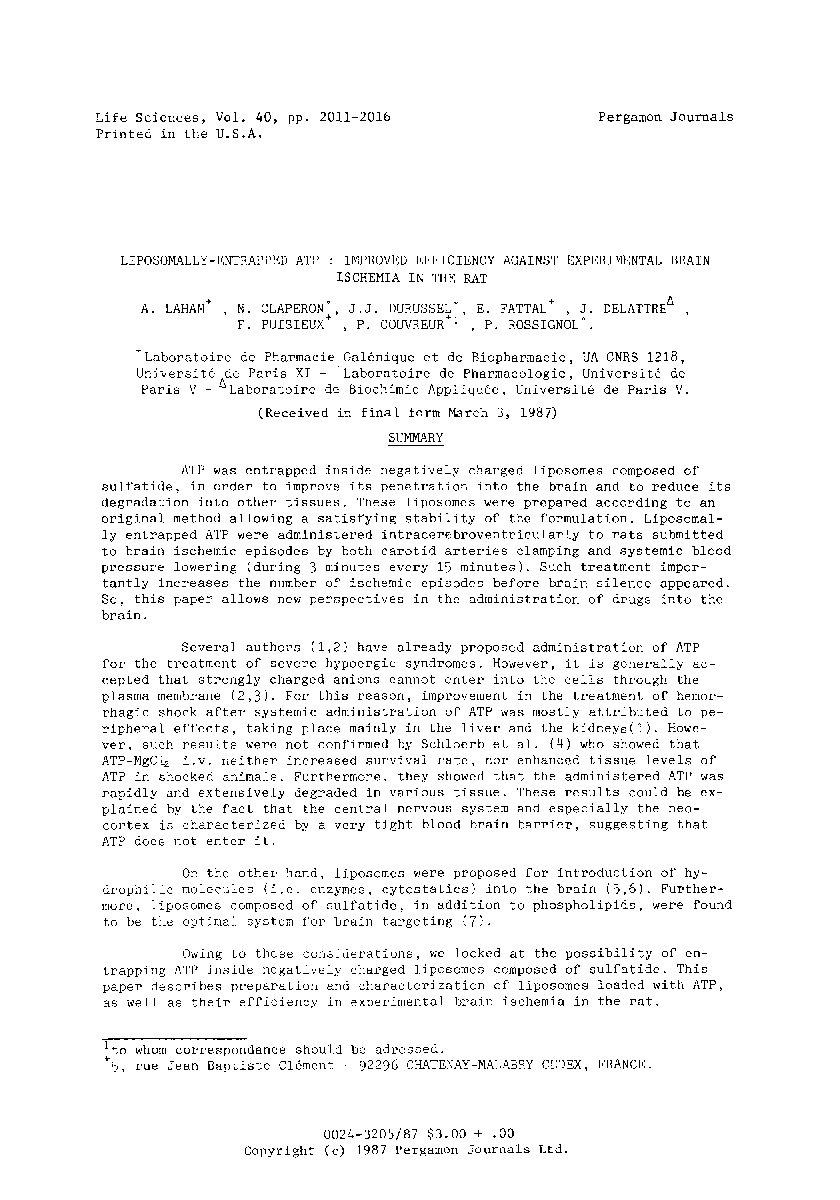| Article ID | Journal | Published Year | Pages | File Type |
|---|---|---|---|---|
| 2558205 | Life Sciences | 2016 | 6 Pages |
ATP was entrapped inside negatively charged liposomes composed of sulfatide, in order to improve its penetration into the brain and to reduce its degradation into other tissues. These liposomes were prepared according to an original method allowing a satisfying stability of the formulation. Liposomally entrapped ATP were administered intracerebroventricularly to rats submitted to brain ischemic episodes by both carotid arteries clamping and systemic blood pressure lowering (during 3 minutes every 15 minutes). Such treatment importantly increases the number of ischemic episodes before brain silence appeared. So, this paper allows new perspectives in the administration of drugs into the brain.Several authors (1,2) have already proposed administration of ATP for the treatment of severe hypoergic syndromes. However, it is generally accepted that strongly charged anions cannot enter into the cells through the plasma membrane (2,3). For this reason, improvement in the treatment of hemorhagic shock after systemic administration of ATP was mostly attributed to peripheral effects, taking place mainly in the liver and the kidneys(1). However, such results were not confirmed by Schloerb et al. (4) who showed that ATP-MgCl2 i.v. neither increased survival rate, nor enhanced tissue levels of ATP in shocked animals. Furthermore, they showed that the administered ATP was rapidly and extensively degraded in various tissue. These results could be explained by the fact that the central nervous system and especially the neo-cortex is characterized by a very tight blood brain barrier, suggesting that ATP does not enter it.On the other hand, liposomes were proposed for introduction of hydrophilic molecules (i.e. enzymes, cytostatics) into the brain (5,6). Furthermore, liposomes composed of sulfatide, in addition to phospholipids, were found to be the optimal system for brain targeting (7).Owing to these considerations, we looked at the possibility of entrapping ATP inside negatively charged liposomes composed of sulfatide. This paper describes preparation and characterization of liposomes loaded with ATP, as well as their efficiency in experimental brain ischemia in the rat.
